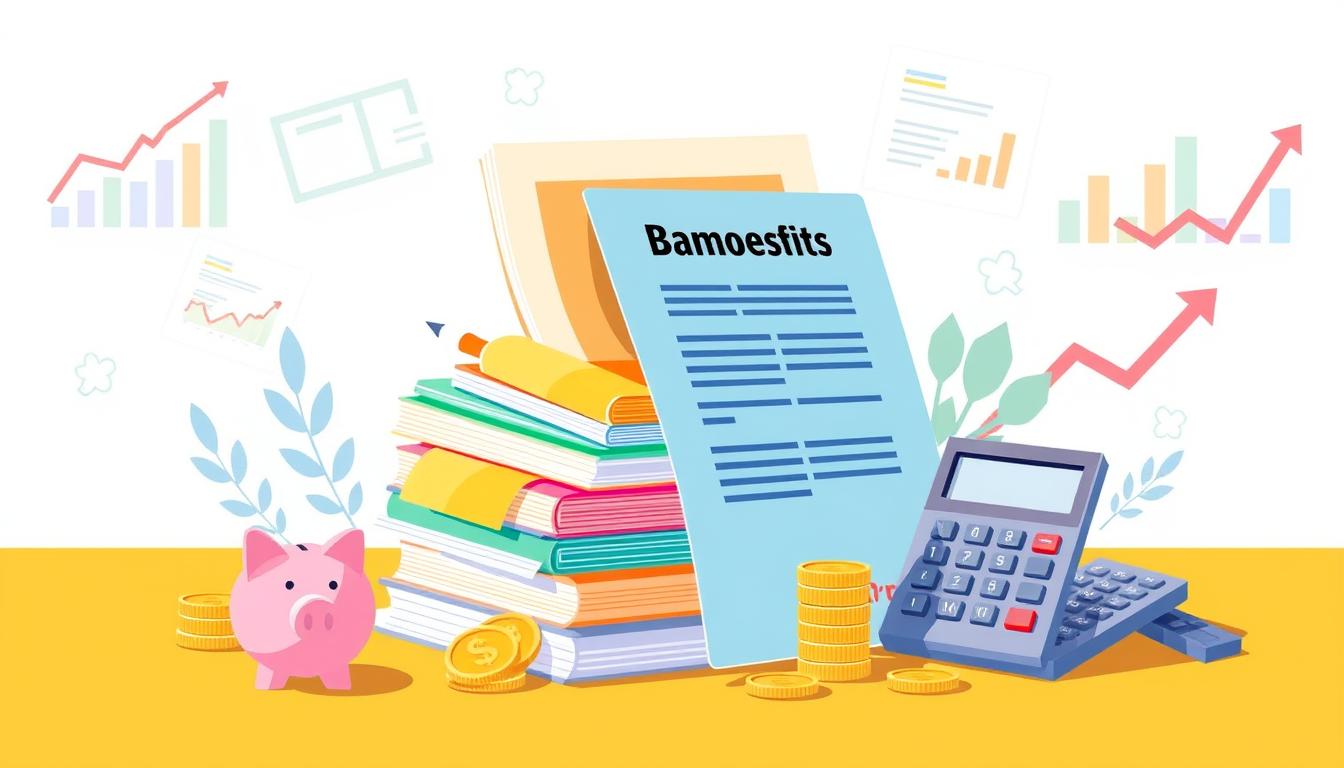To do your taxes, start by gathering necessary documents like W-2s, 1099s, and deduction proofs. Choose a filing method that suits you—either tax software for convenience or a tax professional for complex situations. Determine your filing status based on your marital situation as of December 31st. Calculate your total gross income, subtract deductions to find your Adjusted Gross Income (AGI), and finally, compute your taxable income. Don't forget to check for available tax credits to reduce your overall liability. Keep going, and you'll uncover more useful tips to streamline the whole process.
Key Takeaways
- Collect all necessary documents, including Social Security cards, W-2s, 1099s, and proof of deductions to prepare for filing taxes.
- Determine your filing status based on your marital status as of December 31st to ensure accurate tax calculations.
- Choose between tax preparation software, IRS Free File, or hiring a tax professional based on your financial situation and complexity.
- Calculate your gross income, subtract deductions to find Adjusted Gross Income, and choose standard or itemized deductions for taxable income.
- Identify eligible tax credits, such as EITC and Child Tax Credit, to reduce your overall tax liability effectively.
Gather Necessary Documents

Gathering necessary documents is crucial for a smooth tax preparation process. Start by collecting your personal information and identification.
You'll need Social Security cards for everyone on your tax return, along with a government-issued photo ID, like your driver's license or passport. Make sure you have full names and dates of birth for all family members, plus tax identification numbers for your spouse and dependents. Don't forget a copy of last year's tax return; it can be a helpful reference.
Next, focus on your income documents. Gather W-2 forms from each employer, and if you've done freelance work, collect your 1099 forms for any nonemployee compensation. Additionally, ensure that the accurate names and Social Security numbers match IRS records to avoid potential filing issues.
Also, include any 1099-G forms for unemployment benefits and 1099-R forms for pensions or IRAs.
Lastly, compile any necessary tax deduction and expense documents. This includes mortgage interest statements (Form 1098), student loan interest (Form 1098-E), and charitable donation records.
Keep track of your medical expenses and any relevant IRS or state notices. With everything organized, you'll be ready to tackle the next steps in your tax preparation.
Choose a Tax Filing Method

When it comes to filing your taxes, you'll want to choose a method that best fits your needs and comfort level. One popular option is using tax preparation software like TurboTax or TaxAct. These programs guide you through the process with a question-and-answer format, making it user-friendly. They also feature automated calculations and access to numerous forms, ensuring you catch potential errors. Additionally, the global tax software market is projected to reach $11.19 billion by 2026, reflecting the increasing reliance on software solutions.
If you prefer a more hands-on approach, you can file electronically through the IRS. The IRS Free File program is available for taxpayers earning $79,000 or less. This service allows you to file directly and is accessible on various devices, but be sure to check if free state returns are included.
For those with complex tax situations, hiring a tax professional can provide valuable expertise. While this method tends to be pricier, it offers personalized service and year-round support.
Lastly, if you're comfortable with traditional methods, you can always mail paper forms. Just keep in mind that this method can be slower and carries a higher risk of errors.
Choose the method that aligns best with your preferences and situation.
Determine Filing Status

Selecting the right tax filing method sets the stage for determining your filing status, which is a key component of your tax return. Your filing status hinges on your marital status as of December 31st. If you're unmarried or legally separated, you'll likely file as Single.
If you're married, you can choose between Married Filing Jointly, which is often simpler and more advantageous, or Married Filing Separately, which may lead to higher taxes. Most married couples opt for married filing jointly, simplifying the tax process.
If your spouse passed away in the last two years and you have a dependent child, you can file as a Qualifying Surviving Spouse. Alternatively, if you're not married but support a qualifying person and cover more than half of your home's expenses, you might qualify for Head of Household status, which can lower your tax burden.
Your filing status affects your tax bracket, standard deduction, and eligibility for various credits and deductions.
Use tools like the IRS Interactive Tax Assistant or consult a tax professional to ensure you select the correct filing status and avoid any penalties. Getting this right can significantly impact your tax liability, so take the time to assess your situation carefully.
Calculate Taxable Income

To calculate your taxable income, you'll need to start by adding up all your gross income from various sources. This includes wages, tips, interest from bank accounts, alimony, dividends, and any self-employment earnings.
Make sure to combine income from multiple jobs and report everything on Form 1040 or Schedule 1.
Once you've determined your total gross income, it's time to subtract above-the-line deductions to find your Adjusted Gross Income (AGI). These deductions can include contributions to traditional IRAs, student loan interest payments, and alimony payments. Taxable income is the amount that will be used to determine your federal and state income taxes.
Next, you'll choose between standard and itemized deductions. For 2024, the standard deduction is $14,600 for single filers and $29,200 for married couples filing jointly.
If you have significant medical expenses, mortgage interest, or charitable donations, you might benefit from itemizing instead.
After deducting your chosen amount from your AGI, the resulting figure is your taxable income. This is the amount that will be used to determine your federal and state income taxes.
Understanding this calculation is crucial for accurately preparing your tax return.
Calculate Tax Liability

After determining your taxable income, the next step is calculating your tax liability. Start by summing up your gross income, which includes revenue from sales, interest, dividends, and various sources like salary and bonuses.
Don't forget to declare any additional income such as lottery winnings or gifts. Once you've totaled your income, you'll apply the current federal and state tax rates to calculate the tax due.
Refer to the IRS tax brackets to find the applicable rates for your income. If your income spans multiple brackets, calculate the tax liability for each. Use IRS-provided tax tables or software to ensure accuracy.
Next, factor in any tax-deductible business expenses from your gross income. This includes employee salaries, supplies, and depreciation. Be sure to claim any standard deductions or exemptions you're eligible for. Additionally, it's crucial to understand that tax liability includes all taxes owed to the IRS, not just income tax.
Finally, manage and report your tax liability efficiently. Estimate your quarterly tax payments as required by the IRS and file the necessary reports, including payroll taxes.
Using an estimated tax liability calculator can simplify this process, helping you stay organized and compliant with tax regulations.
Check for Tax Credits

One of the most effective ways to reduce your overall tax liability is by checking for available tax credits. Tax credits directly lower the amount you owe, making them more beneficial than deductions.
There are three main types of tax credits: refundable, nonrefundable, and partially refundable. Refundable tax credits, like the Earned Income Tax Credit (EITC), can give you a refund even if your tax liability is zero. Nonrefundable credits, such as the Child and Dependent Care Tax Credit, only reduce your tax bill to zero and won't provide any refunds. Partially refundable credits, like the Additional Child Tax Credit, offer a mix of both benefits.
To qualify for these credits, you must meet specific income thresholds and dependent requirements. For instance, the EITC has income limits based on your family size. Additionally, understanding the differences between tax credits and tax deductions can aid in optimal financial management.
Some credits are tied to particular activities, like education or renewable energy investments, and may require documentation to prove eligibility.
Frequently Asked Questions
What Is the Deadline for Filing Taxes This Year?
The deadline for filing taxes this year is April 15, 2025.
If that date falls on a weekend or holiday, you'll need to file by the next business day.
If you think you won't finish in time, you can file Form 4868 for a six-month extension, giving you until October 15, 2025.
Just remember, extensions don't delay any payment you owe.
Keep those dates in mind to avoid penalties!
How Can I Track My Tax Refund Status?
To track your tax refund status, you've got several options.
Use the IRS "Where's My Refund?" tool on their website or download the IRS2Go app for mobile updates.
If you prefer calling, the IRS TeleTax System at 1-800-829-4477 can help, or you can reach the refund hotline at 1-800-829-1954 for specific questions.
Just remember to have your Social Security number, filing status, and refund amount handy for accurate tracking.
What Should I Do if I Can't Pay My Taxes?
If you can't pay your taxes, don't panic. You've got options.
Consider requesting a short-term payment extension to delay payment without penalties. Alternatively, set up an installment agreement to pay over time, depending on what you owe.
If you're facing significant hardship, explore Currently Not Collectible status. You might also look into an Offer in Compromise to settle for less.
Whatever you choose, make sure to act quickly to avoid further issues.
How Do I Amend a Previously Filed Tax Return?
To amend a previously filed tax return, you'll need to download Form 1040-X from the IRS website.
Gather your original return and any new documents or forms that justify the changes.
Fill in the required sections of Form 1040-X, explaining what's different.
Once complete, submit it by mail or e-file if possible.
Don't forget to include any corrected W-2s or 1099s, and clearly mark "amended" on your forms.
What Records Should I Keep After Filing My Taxes?
After filing your taxes, it's essential to keep certain records for future reference.
Hold onto your W-2s, 1099s, and any documentation for deductions like mortgage interest and charitable contributions.
Maintain receipts for major expenses and proof of payments.
Generally, keep these records for at least three years, or longer if there's a chance of audit or fraud.
Always check your state's requirements for any additional records you might need to keep.
Conclusion
Now that you've gathered your documents and chosen a filing method, it's time to determine your filing status and calculate your taxable income. Don't forget to figure out your tax liability and check for any available credits that could lower what you owe. By following these steps, you'll ensure a smoother tax-filing experience. Stay organized, double-check your numbers, and you'll be on your way to completing your taxes with confidence. You've got this!









